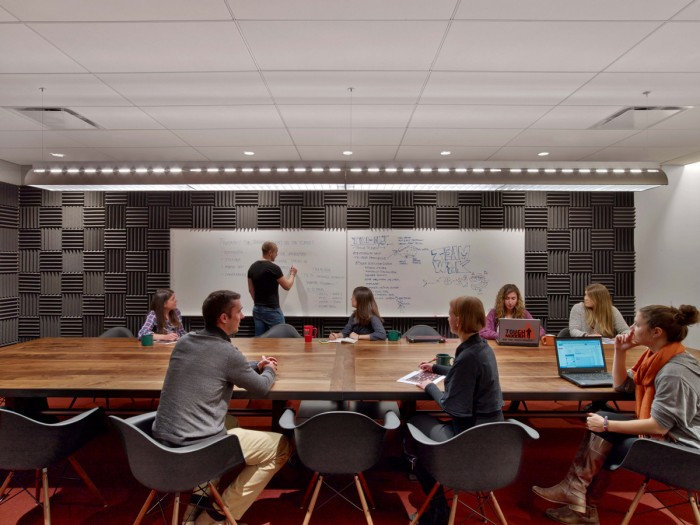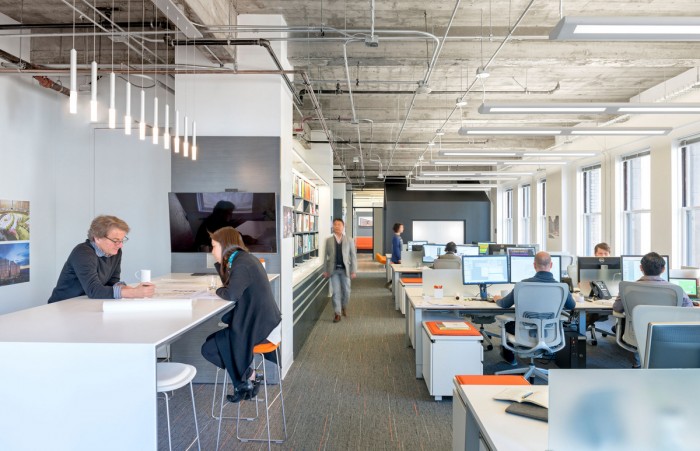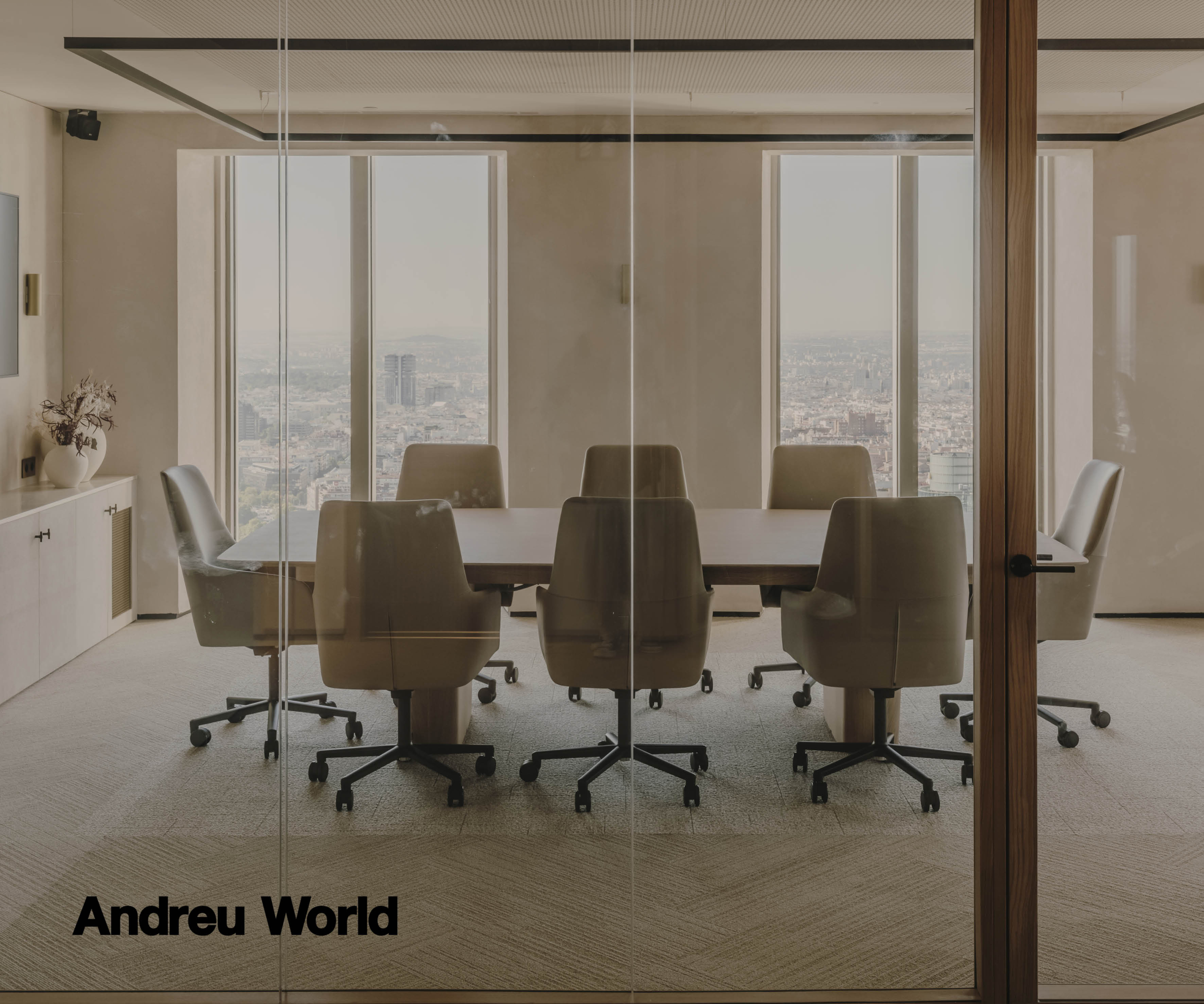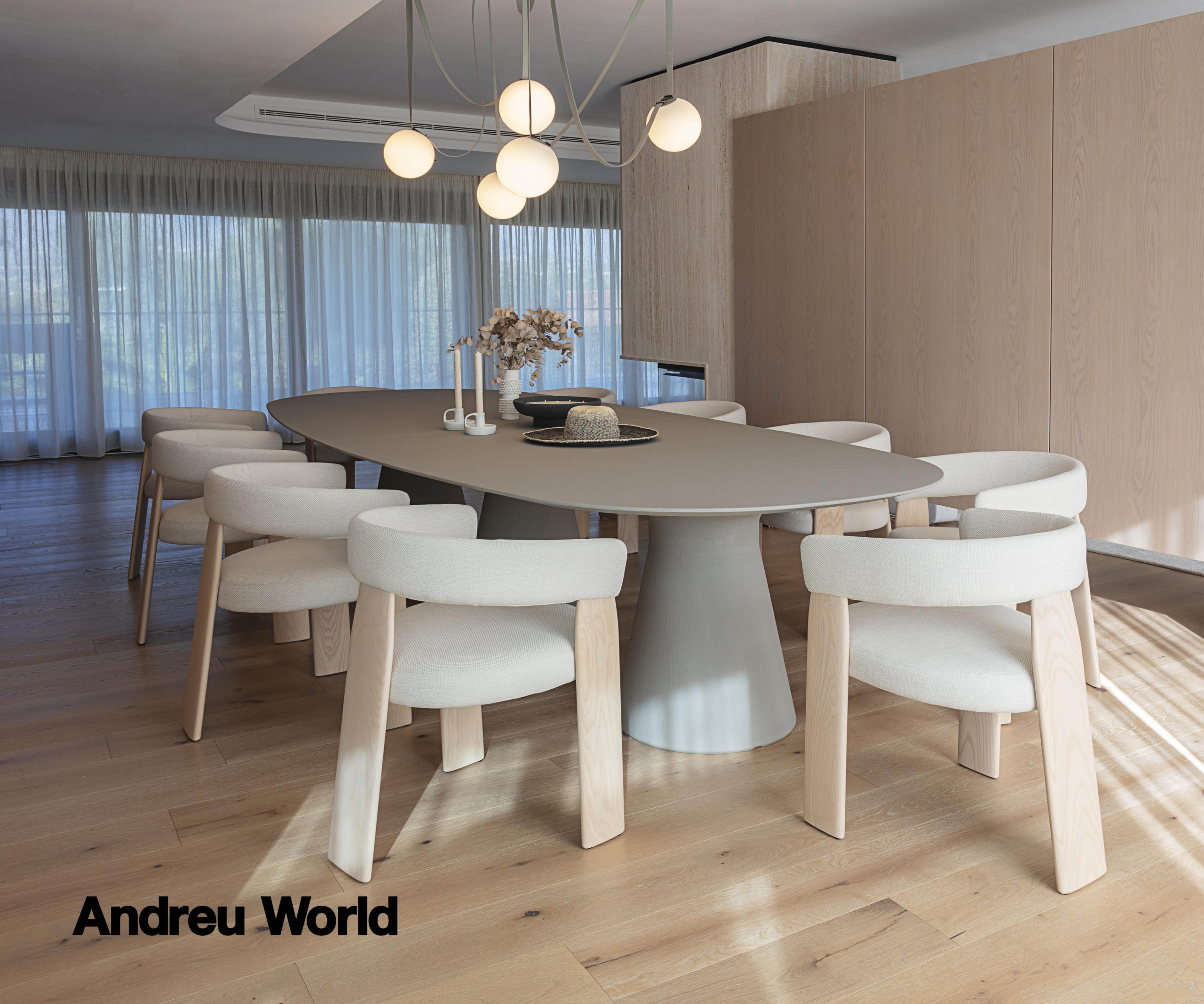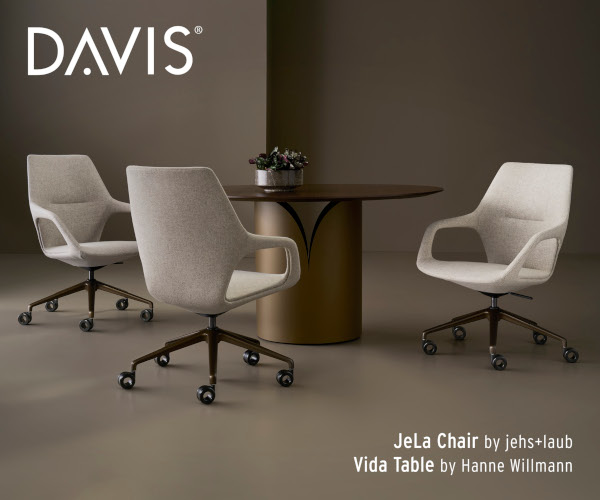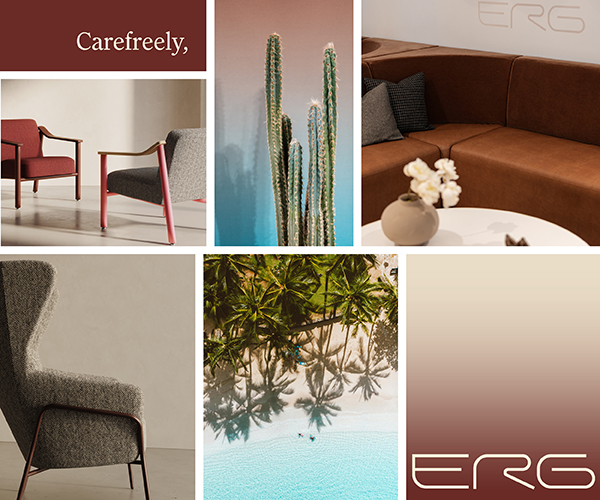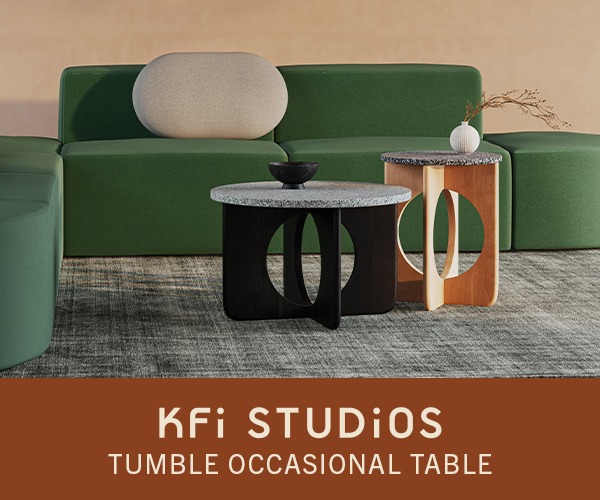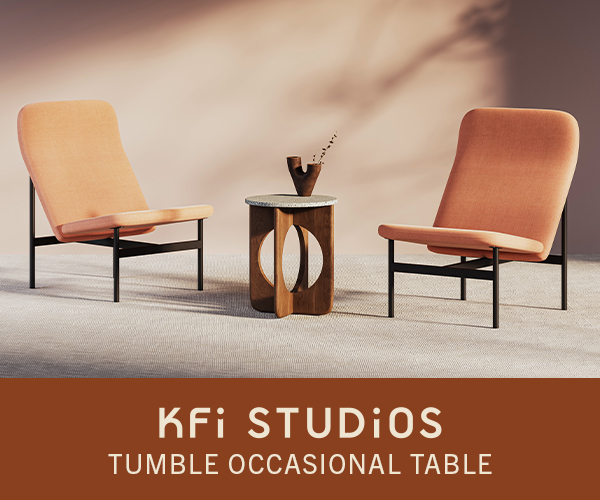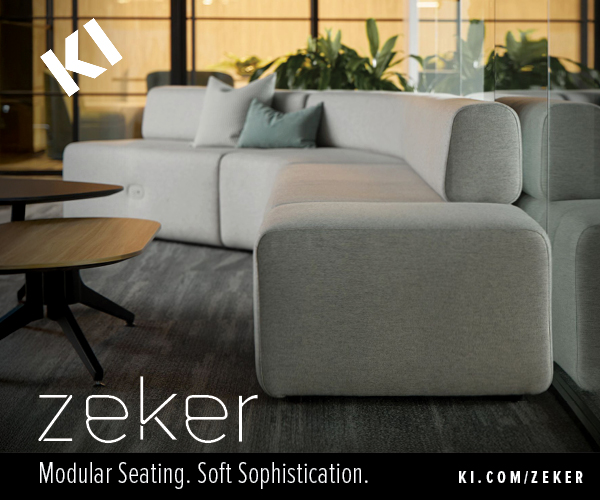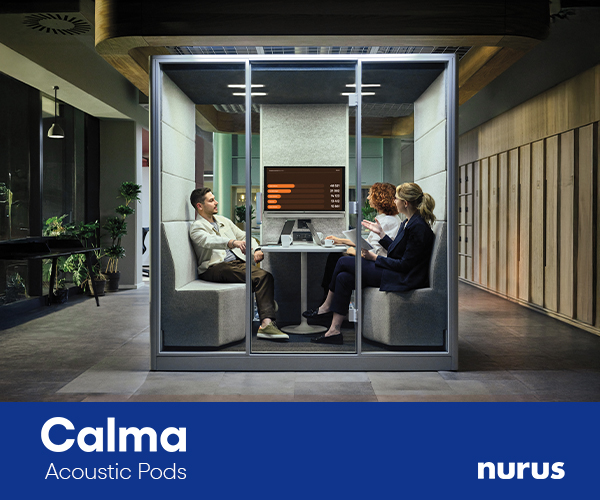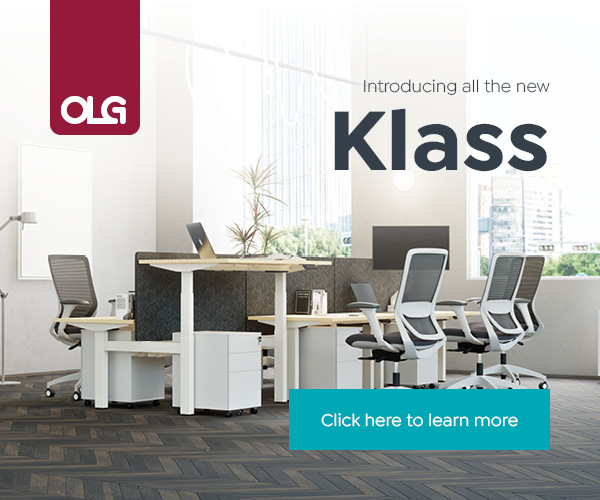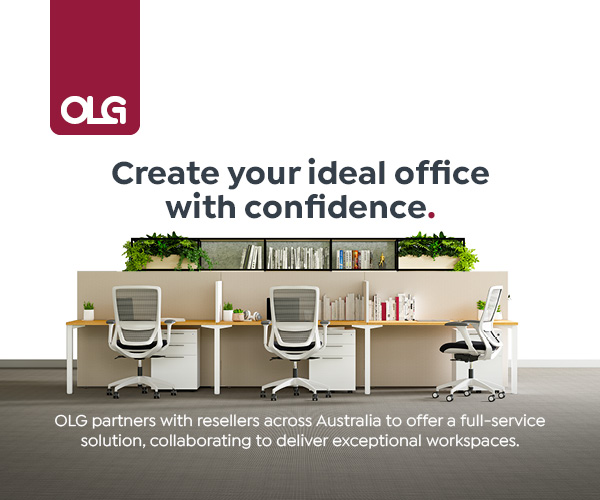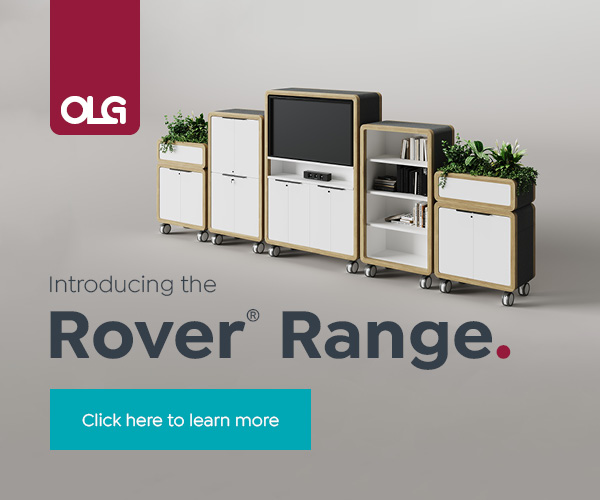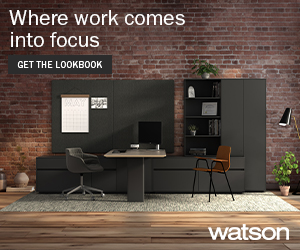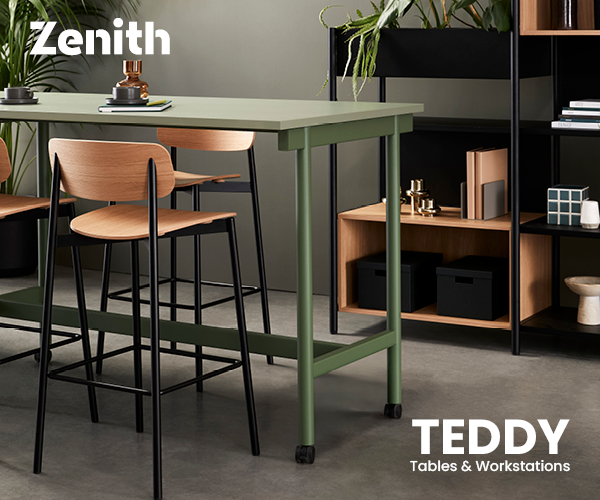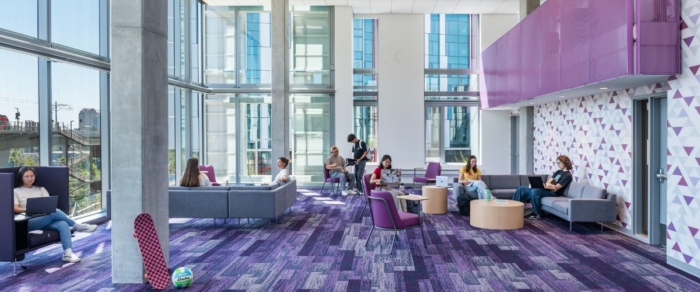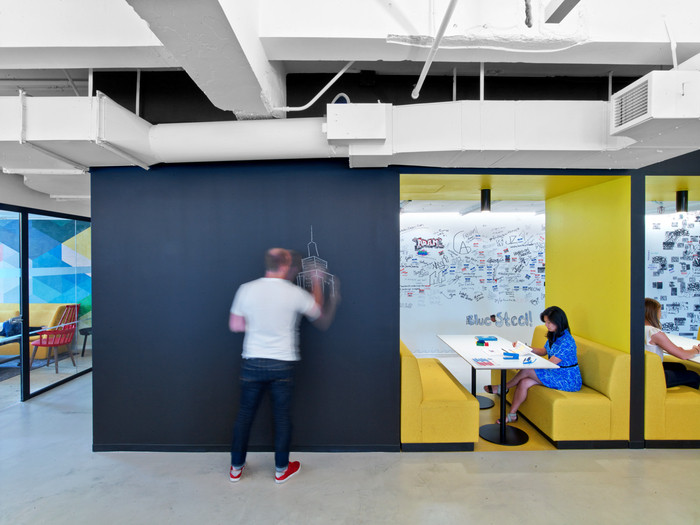
On Collaboration: An Interview with M Moser Associates’ Creative Director Michael Bonomo
On Collaboration is a editorial series of interviews investigating the concept of collaboration in the modern workplace.
In the 8 years since Office Snapshots began publishing, we’ve watched the idea of the collaborative office rise to the level of an almost meaningless buzzword. But collaboration – working together to achieve a goal or complete a task – is an essential ingredient in any workplace that will not disappear any time soon.
We recently spoke with Michael Bonomo, IIDA, Creative Director, USA for M Moser Associates to get his take on collaboration in the modern office.
Michael’s current client experience includes a wide range of global organizations that are embarking on confidential projects in the FinTech, Software, Financial and Consulting sectors. Historically, he’s completed work with Spotify, Godiva, PwC, Bloomberg, Kate Spade, Michael Kors, Pfizer and many more.
Image above from LinkedIn New York City offices – photo by Eric Laignel.
—
Office Snapshots: What does a collaborative office space look for a client of M Moser Associates? Is it different depending on the company?
Michael Bonomo: At M Moser, we’ve learned from our clients that ‘collaboration’ in and of itself does not always work – and can often be disruptive. Ten years ago clients were pressing the design community to create the most progressive spaces to attract and retain best-in-class talent. During that evolution, the notion of ‘collaboration’ was thrown around, a lot. Most clients want their teams to be inspired, to connect, and to share – or cross pollinate, with the goal of yielding the best possible product for their clients drawn from a wide swath of their peoples thinking. So, when we think about collaborative spaces for our clients – it’s more about how do we create spaces that allow people to have a sense of community and connection – the collaboration is inherent in all work, but only will happen if people are disarmed and feel a connection to the space… THEN ideas will flow naturally. Creating connection in spaces is very different depending on demographic, region, climate, range of experience, age of employees, age of the business, culture – the list goes on. We’re working with major companies across the globe in all sectors, our Fintech clients, or software developer clients in the Bay Area seek drastically different spaces to connect than say a law firm on Park Avenue. At the end of the day, it comes down to what is considered culturally acceptable for each specific business.
Tough Mudder NYC by M Moser Associates
Photography: Eric LaignelOS: Do companies ask you for a “collaborative office” or do those needs present themselves through discussions about what their needs are?
MB: With the onslaught of ‘smart’ devices and having them strapped to ourselves even while on a beach vacation ‘work’ happens all the time, for all of our clients – there are few exceptions. Office spaces must be the home base for when we all come together. While technology continues to drive how we work, space will drive how we engage on a human level. Our client discussions are mainly about the WHY and the HOW they intend, and expect for people to share and connect and then we can design to those values. We conduct very interactive work sessions with all clients to distill the basic rules for how their people will be most inspired and most productive within their spaces.
OS: We often see companies thinking of collaboration as being “putting employees in an open plan and watch them collaborate”. Do you find that there are misconceptions about what collaborative work environments are?
MB: Every day. Collaboration is like mentoring. You can’t be forced to have a mentor, generally we choose our mentors based on connection, trust and who we’re inspired by; much like the way we choose a restaurant because of how the space makes us feel; and most importantly, how it allows us to connect with our friends. The workplace is no different, collaborative work cannot be forced, but if the proper research and engagement is conducted with a wide cross-section of stakeholders you’ll get an honest depiction of what an ideal space looks and feels like. Only then will collegial connection thrive. The ‘googling’ of business a decade ago was well-intended, but we’ve all found the proof is in the research, and also building spaces that can augment over time as work trends and technology evolve organically.
M Moser Associates San Francisco Offices
Photography: Jasper SanidadOS: Is the actual act of collaborating something that is design-driven or culture-driven? Or both?
MB: Culture-driven for sure. As designers we’d be foolish to believe that design is the reason – design is the agent to support where the culture aspires to be. A beautiful space will only be used if those using it connect with it. Design can win accolades when it achieves perfect synergy for a group of people, but it has to start from basic metrics and qualities that come from culture. That being said, a great number of ongoing clients right now are struggling to identify their own culture and values – we’re helping many with that as well. We’re often teaching the C-Suite about their engineers and vice versa, a lot of what we do is psychology first, design second.
OS: Do you have any other thoughts about what a collaborative office environment is or isn’t or should be?
MB: Every office needs to foster interaction, connection, and a culture of ‘we’ – to be collegial. We’re seeing that big company decisions are nearly always done by committee today, and the thinking to get there is also the same. While an idea may come from a single source, its evolution happens across many people or teams – the spaces where this all happen need to embody the same characteristics to reach the greatest success.
